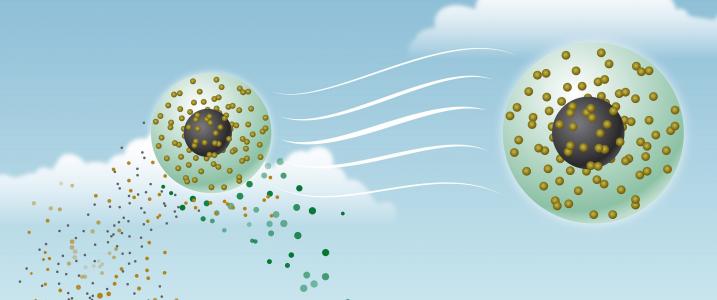Air pollution isn’t motionless – it moves. And, currents of air (wind), is what enables its movement. The occurrence can alternatively be called air pollution locomotion, the word “locomotion” meaning place-to-place moving.
Depending on conditions present, pollution in the air can travel thousands of miles from where it is sourced.
There is conclusive evidence that pollution sourced from one locale, hitching a ride, so to speak, on currents of air can show up in others.
Take the case of ozone from China showing up in air on America’s west coast.
How do we know this? Well, using certain investigative and sampling techniques it is possible to pinpoint air pollution sources definitively.
Okay, so consider highly relevant text in the Air Quality Matters blog article “Incoming: More to Trans-Boundary Ozone impacting California than ‘hot air’,” text very much worth repeating here. Again, to repeat:
“According to Bakersfield Californian newspaper staff writer Steven Mayer on Sept. 1, 2013 in ‘Valley air pollution: Made in China?’ several studies have already been initiated in this regard. Pinpointing TBO [Trans-Boundary Ozone] sources is key.
“A one-and-a-half-year University of California at Davis study relied on aircraft aerial surveillance ‘to help determine whether long-distance flows of ozone from Asia are mixing with valley air,’ Mayer wrote.
“Another study, initiated by lead University of Colorado atmospheric scientist Owen Cooper utilized ‘a network of four balloon-launch sites along the California coast, and more sites inland, to gather ozone readings at various altitudes,’ wrote Mayer, and ‘[p]ublished in 2011 by the Journal of Geophysical research [sic], the study used ozonesondes, balloon-borne instruments that measure concentrations of ozone at different altitudes and broadcast the data back to researchers.’
“‘… [I]n the free troposphere above 3 kilometers, or just under 2 miles in altitude, ozone precursors, or smog-producing chemicals, were found by Cooper’s team. The main sources? China and international shipping.’
“But, how can it be for certain sources are definitively identified?
“Mayer cited David Lighthall, a San Joaquin Valley Air Pollution Control District (SJVAPCD) health and science advisor and TBO research coordinator, who in effect expressed that via tiny bits of soot having their own unique ‘elemental signatures’ and when mixed in an ozone plume and carried by winds, for example, origins of such particles can then be determined, according to what I understand.”
Thus, the “conclusive evidence” alluded to above.
It should therefore go without saying that the knowledge gained regarding the source or sources of such hitchhiking pollution and thus pinpointing where that ultimately settles, should not only be regarded as being both important and helpful, but invaluable as well in terms of determinations being made regarding what kind or kinds of mitigating actions can be put into place when it comes to such being properly addressed and by virtue of that and, as a result of that, in terms of learning what mitigating methods are found to be effective and which ones are less so or not at all.
What seems obvious is that more of this kind of investigative work involving such detailed study is warranted at this time.
Image above: Pacific Northwest National Laboratory
